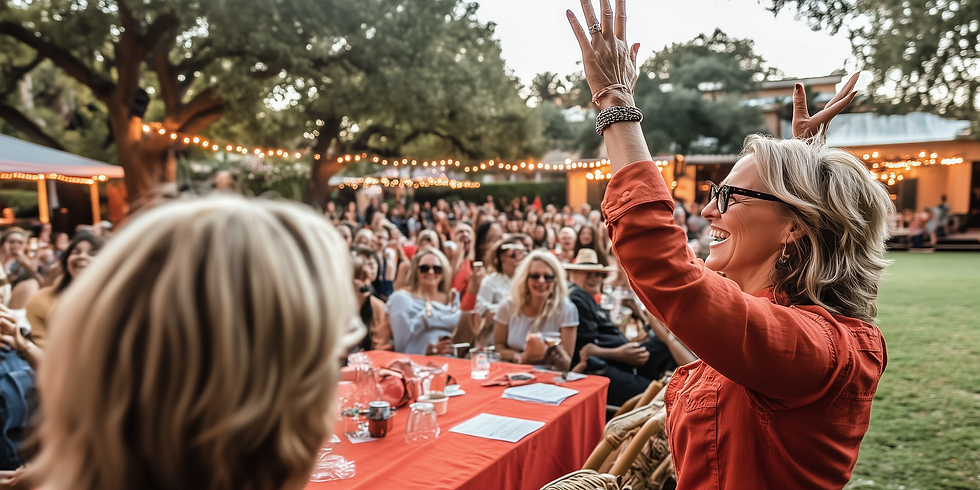
Community-building is a delicate thing. You put in the effort, build a space for people to connect, share, and grow together, and yet, there's always that chunk of the community that stays on the fringes.
No matter what you do, some folks just prefer to hang out on the edges, watching rather than participating. So, why don’t all people engage with your engagement? This is the age-old question that plagues community builders everywhere.
There’s an old concept in community-building known as the 1-9-90 rule. This theory suggests that in any community, 1% of the members will be super active, 9% will engage occasionally, and the remaining 90% will remain passive. As a community-builder, the goal isn't necessarily to make everyone a super-active participant; it’s more about shrinking that passive 90% down to, say, 70%. But what’s keeping these folks on the outskirts?
Let’s break down some common reasons why people might stay on the outer rim of a community.
No time
This one’s a no-brainer. We’re all busy, and time is one of the few things we can’t make more of. When people are protective of their time, they might choose to limit their engagement. Maybe they’ve got a hectic job, family commitments, or just need some downtime. However, it’s important to recognize that “no time” can sometimes be a convenient excuse rather than the real issue. It lets the community organizers off the hook, allowing them to say, “Well, we tried, but people just don’t have the time.” Instead, it’s worth asking if the community is making the best use of the time people do have.
Not enough information
Maybe they don’t know what’s expected of them, or they’re unsure what will happen if they step up their involvement. Worse still, maybe they don’t even know what the community is really about. If people are unclear about the purpose, structure, roles, rules, and responsibilities, they’re likely to stay passive. This is where clear communication comes in. Regularly explaining and re-explaining these aspects can help turn passive members into active ones. It's about making sure everyone’s on the same page and knows how to get involved.
Missing the aligned purpose
Engagement often hinges on a shared sense of purpose. A community needs to feel important and valuable, but that’s not enough on its own. The community’s purpose also needs to align with each member’s personal goals or values. Without that alignment, even the most compelling community mission might not inspire action. If members can’t see how their own purpose connects with the community’s, they’re less likely to engage.
Not having a sense of ownership
For people to feel truly engaged, the community needs to feel like their community. They need to be proud of it, and it needs to resonate with their identity. If members don’t feel a sense of ownership, they’ll be more likely to stay on the fringes. When people see a community as something they can shape and influence, they’re more likely to dive in and contribute.
Only an identity link to the community
Sometimes, people are part of a community simply because it’s tied to their identity. Maybe it’s a group from their old school or a professional association they feel they should belong to. But if the community is more of a historical emblem or a status symbol than a living, breathing entity, people might not feel motivated to engage actively. It’s like being in a club that you never actually visit; you’re a member, sure, but it doesn’t play an active role in your life.
Community works as a media
For some, communities are valuable not as places of active participation but as sources of information. A community might be the best—or only—place to find certain curated content, so people join and lurk. They consume what the community produces but don’t feel compelled to contribute. In these cases, the community functions more like a media outlet than a gathering place, and many members will remain passive consumers rather than active participants.
Community is beneath my value
This one’s tricky. Sometimes, people might feel that a community doesn’t align with their personal brand or professional standing. Imagine you’re an AI expert invited to join a fledgling AI community started by a trade union. You might join because you’re interested in all things AI, but you’re hesitant to take an active role because you feel the community doesn’t match your expertise or reputation. In this case, the community might be seen as beneath your value, and you might stay passive to avoid diluting your brand.
Community core repels outsiders
Every community has its inner circle, the folks who are always involved, always present, and always in the spotlight. While this core group is often vital to a community’s success, it can also be off-putting to others. If new or peripheral members constantly see the same people leading the charge, they might feel like outsiders in what seems to be someone else’s community. This sense of exclusion can keep people from becoming more engaged, reinforcing the divide between the core and the outer rim.
As community-builders, our job isn’t to expect everyone to dive in headfirst but to understand these reasons and address them thoughtfully. By doing so, we can create environments where more people feel encouraged, informed, and inspired to move from the outer rim to a more active role. After all, a community thrives not just on the strength of its core but on the collective energy of all its members.
Bình luận